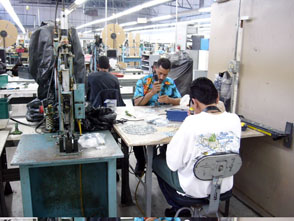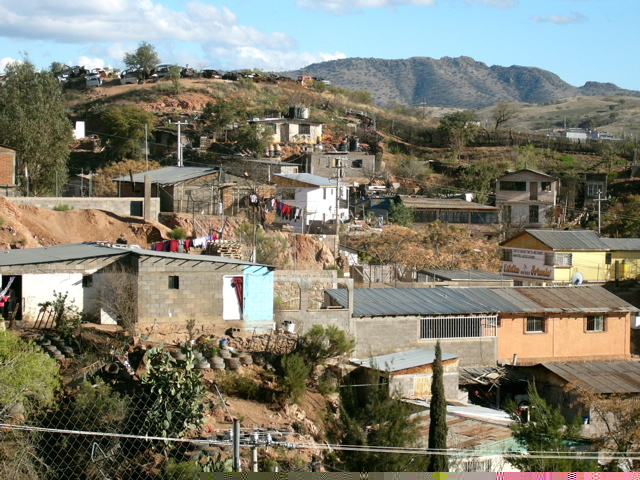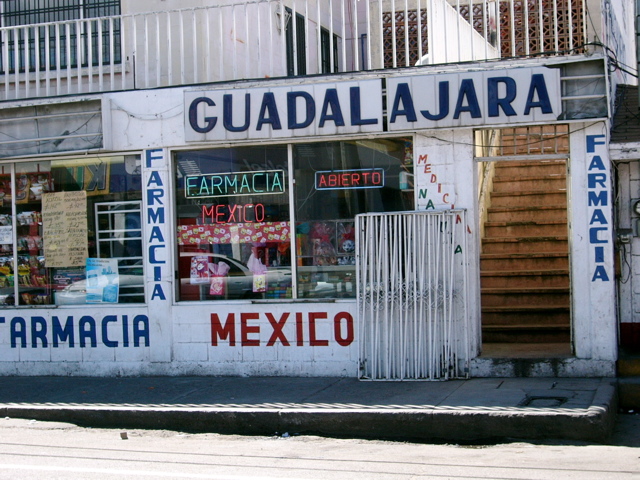
- My Home Page
- My Bio
- Family Object
- Immigrant Agency Brief
- Border Links
- Country Poster
- City Migrants
- Crossing The Valley
- Open Letter
The photo to the right is of the
Colonia Kennedy in Nogales.
Borderlinks Trip To Nogales

I found that the experiences we had with the Maquiladora in Mexico were heightened by the Borderlinks reading (and other readings) I had done beforehand. The readings gave a lot of insight into the situations we encountered, and allowed me to think critically of what we were being told.

If you went solely by what our guide had said, you would assume that the whole industry was idyllic and everyone loved their jobs. However, she failed to mention (and maybe assumed we didn’t know or wouldn’t find out) that this was not the case. In the article by Maria Guadalupe Torres entitled “We Are Not Machines, Corporations that bring jobs must bring justice too”, I knew already that the ‘comparable pay’ was less than adequate pay for someone to reasonably live off of. Torres said that she had to work 3 ½ hours to buy a gallon of milk (Torres, pg. 17)! Also, because of her article, I noticed the fact that no one was wearing protective gear, despite the fact many of them were working with heavy machinery and chemicals. The Maquila guide had said that the workers were all supplied the appropriate gear but chose not to use them. If this were true, I think the companies would have an obligation to make their employees wear them anyway, for their own safety. Torres mentions in her article that many people with long work histories at Maquilas had to quit eventually because of work-related illnesses (Torres, pg. 117). I would imagine that at least some of this could be curbed by proper use of safety equipment, enforced by plant managers.
Another article from the Borderlinks packet entitled “Hazardous Waste Management on the Border: Problems with Practices and Oversight Continue” by Cyrus Reed, made me think critically of the waste disposal practices at Maquilas, and I actually asked the Maquila manager how they dispose of their chemicals. She told us that they used two chemicals there. One chemical was recycled at the plant, and the other was sent to a waste management company to the south. I was prompted by the readings to wonder whether or not the Maquila had any idea as to whether those chemicals were disposed of properly (Reed, pg. 44), but I honored requests to be respectful to those we were visiting that day, and did not probe any further.
Another topic that I found particularly interesting on this trip was that of labor unions. I had read beforehand in “Unions Without Borders” by David Bacon, that even with help from organizers in the U.S., forming a badly needed union is a nearly impossible feat. Even if one is organized successfully, then a Maquila will move to another city, or even country, that doesn’t have any unions. This, along with the well-understood distrust of the Mexican people concerning unions, makes this type of organizing exceedingly difficult.

During our dinner at the Casa de la Misericordia (the view from it is pictured above), Kiko Trujillo, the Executive Director of Borderlinks Mexico, came out to discuss what we had seen that day. I asked him whether or not any of the Maquilas he had worked at had been unionized. He said that many Maquilas secretly have a ‘union’ for their employees already in place, and when employees start working there they are tricked into signing an agreement saying that they are paying members of that union. In fact, the union does nothing for the employees. According to Mexican law, you cannot have more than one union at a workplace. So having a ‘union’ already in place is the Maquila’s way of forcing their employees into submission. Needless to say, Kiko Trujillo said that because of this, people in Mexico have no trust of unions, and feel no need for them.

There were so many things that I learned on this trip, that I could almost write a book! But one of the most significant things that I got from this trip is the importance of being educated on the country you are visiting. I don’t think it would have been nearly as rich an experience had I not read that packet and classroom readings beforehand, and had some idea of issues and concerns along the border.